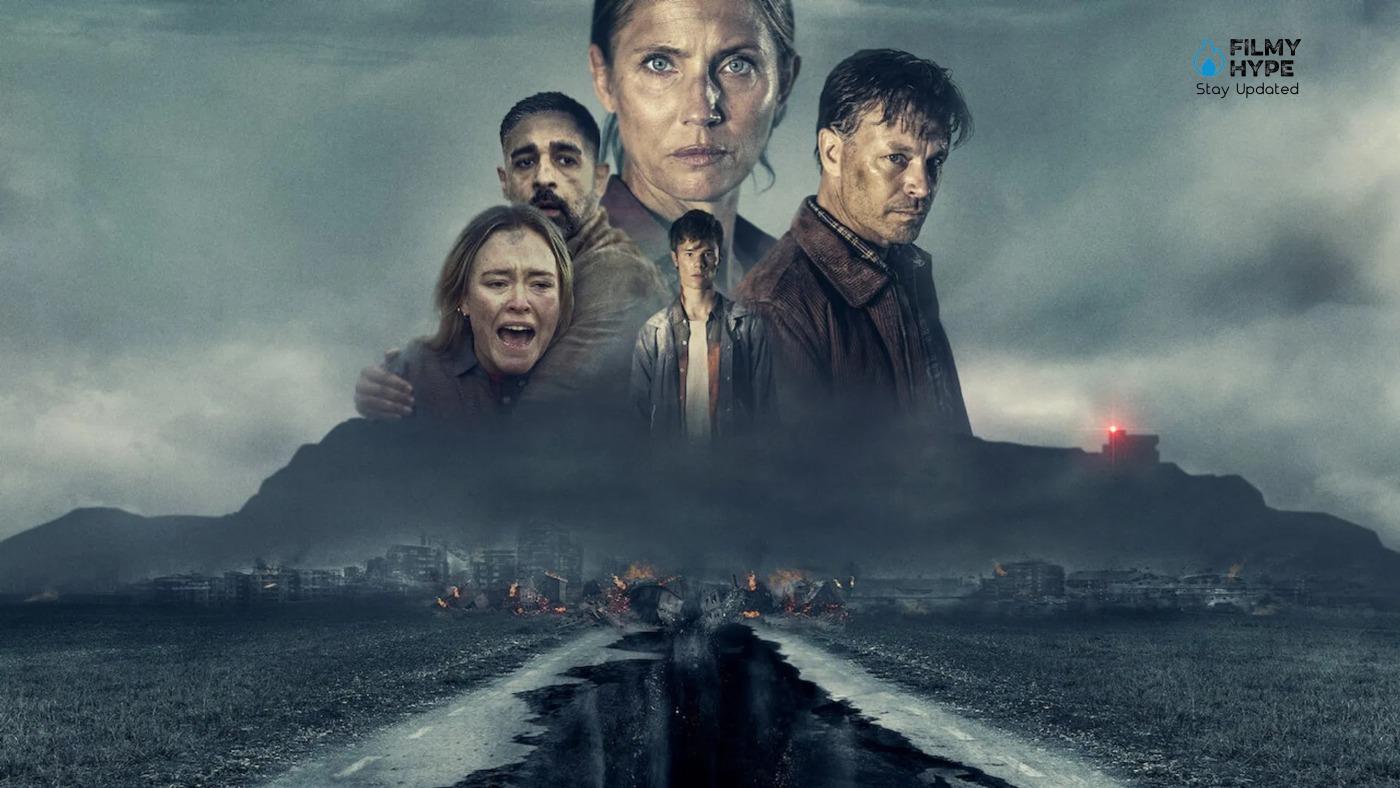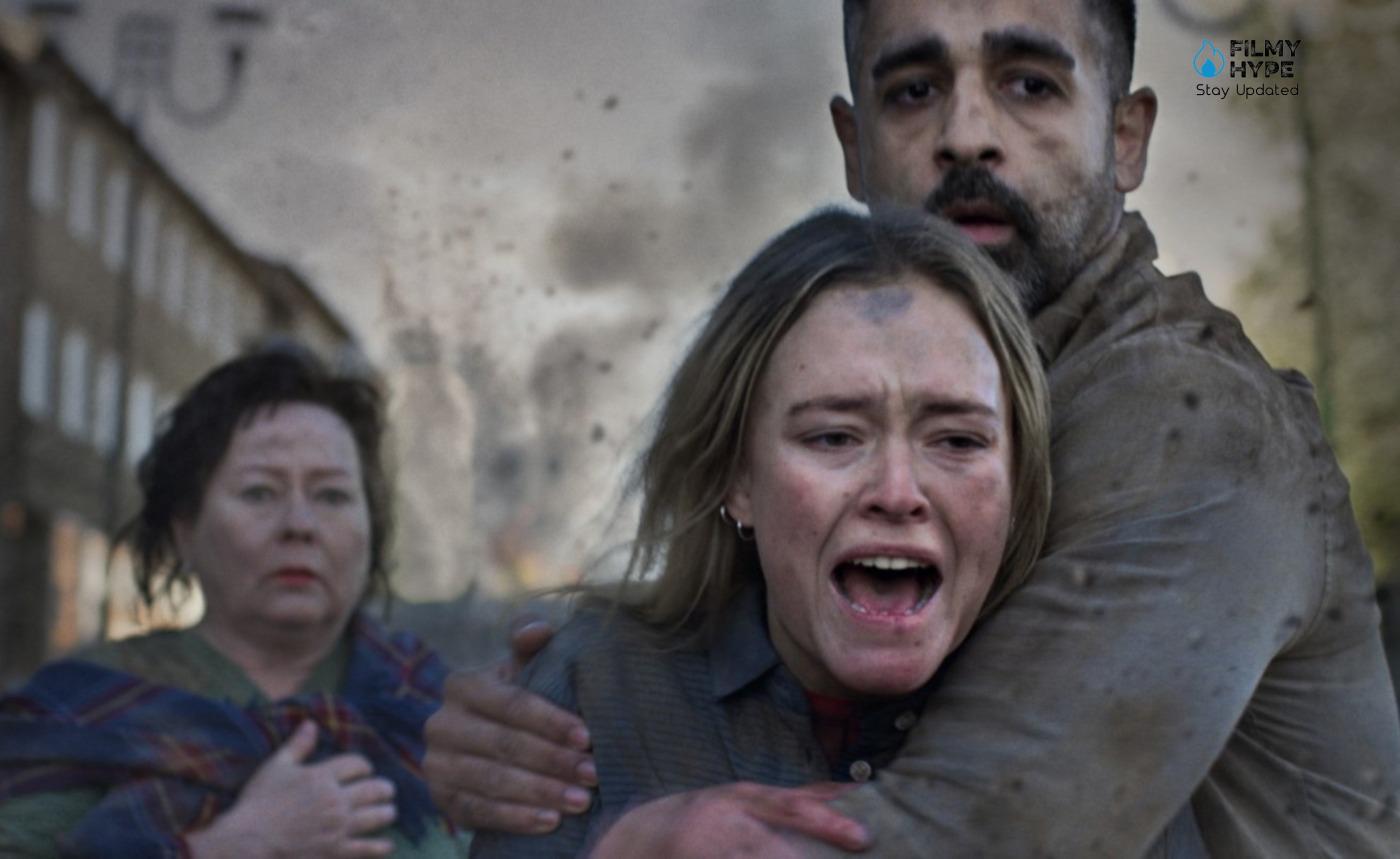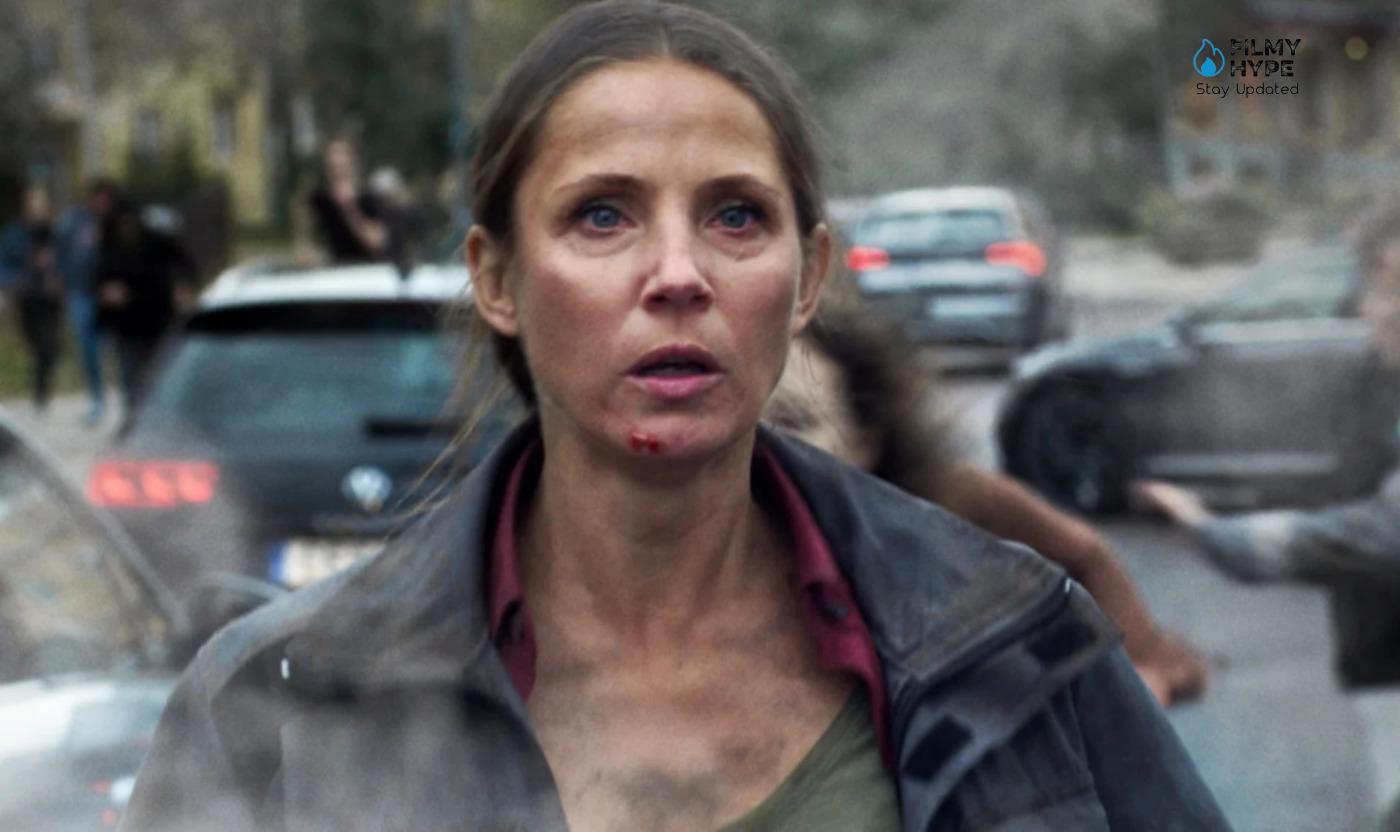The Abyss Review: The Swedish Disaster Film and the True Story of Kiruna (Avgrunden)
Cast: Tuva Notovny, Kardo Razzazi, Peter Franzén, Felicia Maxime, Edvin Ryding
Director: Richard Holm
Streaming Platform: Netflix
Filmyhype.com Ratings: 3/5 (three stars)
The narrative premise of The Abyss (original title Avgrunden), a Swedish film available on Netflix from February 16, is connected to two mining accidents known in the country’s history and which occurred in the mine where the film is set. The second, dating back to 2020, shook not only the earth but also the consciences. The mining activity has raised a very heated debate and inspired the disaster film directed by Richard Holm (best known for the detective series of Johan Falk), which unfortunately does not live up to the premise. Because the city of Kiruna is truly sinking, and although well-acted and with excellent special effects, The Abyss chooses to focus exclusively on the fate of a few characters, missing a great opportunity. Perhaps due to the collaboration on the screenplay by father and son, Richard and Robin Holm, which led to the choice to focus on a single family. Disaster movies have always been a very successful genre, capable of involving spectators who love strong emotions and more adrenaline-filled narratives.

If the USA is the official capital of this type of film (here you will find what we consider to be the best disaster films around), Northern Europe, especially in recent years, has stood out for well-made and well-crafted titles, for example, The Wave of 2015, capable of rivaling their overseas counterparts. A new representation of the genre arrives on Netflix, an original Swedish production which, rather than dealing with those issues with a more universal approach that is lately the most popular – such as the impact of climate change on the planet, focuses on a more “situation” restricted”, limited to the borders of a small Swedish town threatened by the collapse of the mine on which it is built. A “small” problem if we think of the scale of certain other films of the genre, but decidedly enormous for those who are affected firsthand: as we will see in our review of The Abyss, therefore, it is a story that aspires to involve the spectator by bringing him in a more realistic situation, which concerns normal individuals, who face the most desperate situations as perhaps we would face them.
The Abyss Review: The Story Plot
Frigga (Tuva Novotny) is the safety manager at the infamous Kiruna mine. Her commitment is remarkable, given that she has to reconcile work with her complex private life – she has two children, she is divorcing Tage (Peter Franzén), who does not want to let her go and surrender to the evidence, and she has a new partner, Dabir (Kardo Razzazi). Frigga’s eldest daughter, Mika (Felicia Maxime), is a teenager caught up in protests against the mine, whose activities threaten the survival of the town where she was born and always lived. According to Frigga, the mountain continually shifts, causing minor aftershocks, but mining activities appear to be linked to these seismic events. While monitoring an event related to a mine collapse, Frigga becomes trapped underground while Mika desperately searches for her brother Simon (Edvin Ryding) who disappeared after celebrating his birthday with friends. When the entire city is threatened, Frigga and Mika try to save themselves while looking for Simon.

At the center of this story, we find the town of Kiruna, which developed around a very important steel mine for the Swedish economy. However, the extraction works within it are the cause of frequent earthquakes, some of which are truly worrying, so much so that the city is in the process of being moved for the safety of its inhabitants. However, a series of increasingly closer tremors make us realize that the timeframe is much closer than what the local authorities had expected. Things will soon take an unexpectedly dramatic turn: the icy Frigga (Tuva Notovny), head of mine security, notices the impending disaster and tries to evacuate Kiruna as soon as possible, but the disappearance of her son Simon (Edvin Ryding) takes her right into the heart of danger. Together with her, there will be her ex-husband Tage (Peter Franzén), her new partner Dabir (Kardo Razzazi), and her rebellious daughter Mica (Felicia Maxime), ready to do anything to bring Simon home.
The Abyss Review and Analysis
Let’s start by saying that the film, at least on a technical level, was able to hold up, thanks to a staff who, under the guidance of a filmmaker with proven experience such as Richard Holm (known above all for the detective films in the Johan Falk series) was able to create a disaster -movie of undoubted quality and discreet workmanship. The work behind the camera of the Stockholm filmmaker and his crew, to which is added the precious contribution in the post-production phase of truly effective VFX, has ensured that The Abyss can have its say in the genre and not under any circumstances suffer from an inferiority complex compared to products made in the USA. Already in 2015 with The Wave, there were more than encouraging signs. In this sense, Holm’s is a film that has all it takes to compete with Hollywood’s catastrophic blockbusters.
Of course, there is still a long way to go, but the distances to be bridged are no longer as enormous as they once were, with The Abyss proving capable of involving the spectators on duty with strong emotions, especially when the danger becomes gradually greater with the mind going back to Twister rather than San Andreas and Dante’s Peak. The Abyss follows to the letter the rules of engagement and the basic scheme of the aforementioned thread, starting from the essential phases that mark the narrative path of the story: imminent danger, catastrophe, budget, and mission of recovery of those who are missing, with the disaster-movie that changes skin, transforming into a survivor-movie when the attention shifts twice to the struggle for survival of a small circle of characters, including the protagonist played by an always convincing Tuva Novotny, who first has to get out alive from the collapsed mine and then has to rescue the entire family from a building that is crumbling with them inside.

The presence of another recurring element in similar operations comes naturally, namely the family odyssey set within a collective tragedy which in this case are the devastating events that happened in 2020 in the city of Kiruna and the Kiirunavaara iron ore mine, located in the northern region of Sweden. The originality in the plot is necessarily less, however, the Scandinavian filmmaker finds a way to give meaning to the operation, appropriating a traditional Hollywood genre, but leaving out all that heavy load of clichés linked to presidential speeches or the chaos of the metropolis (see Volcano) to take us to a defaced corner of paradise on earth. At the same time, the traditional environmentalist message with which the film of the moment points the finger at the reckless actions of human beings to the detriment of Mother Nature cannot be missing. In the classic catastrophes, like those very popular in the Seventies, hurricanes, fires, tidal waves, and earthquakes like the one witnessed in The Abyss which cause the town and its inhabitants to sink, are the basis of almost all the plots.
In doing so, nature and films like The Abyss constantly remind us how small and insignificant we are, but also what damage we can cause to the planet that hosts us. Richard Holm signs the largest and most expensive Swedish disaster film, recalling the tragedy of the mining town of Kiruna in May 2020. With The Abyss, the Stockholm director creates a classic disaster movie in both form and content that follows the modus of the genre to the letter, winking at overseas models. A family and collective odyssey comes together in a work that once again launches an environmentalist message, pointing the finger at the wicked human actions against Mother Nature. In short, nothing new for the genre in question on the narrative front, but a further technical step forward for Scandinavian cinematography in technical terms, with packaging and VFX that are up to the task.
However, we found the choice to place a rather unpleasant protagonist at the center of the narrative interesting: Frigga perfectly embodies the Nordic coldness with which we tend to associate Swedes, she is brisk, rude, and resolute. For this reason, she is particularly fascinating in her way. The idea of the contrast between the characters is quite common in films of this type: we have a separated couple – Frigga and Tage – who will get closer “thanks” to the disaster, but among them, there is her partner, in this case, a capable firefighter who will throw himself body and soul into the mission to save his new family.
The relationships between the protagonists are well outlined and make the choices they make understandable, in particular, the relationship that emerges between Frigga, Tage, and Dabir is quite interesting. Simon’s research, which forms the skeleton of the narrative, will then give rise to some of the most emotionally intense moments of the film – even in a “cold” and measured context like this. The family bonds depicted in the film are authentic and make an otherwise somewhat flat film work. In addition to Frigga, he is impressed by his two children – Simon and Mica – and his new partner Dabir, practical and calm and plays with great intensity by Kardo Razzazi. Tage’s character is less interesting, decidedly more predictable and two-dimensional than the others.
The story of the city of Kiruna and its mine is true: the city is slowly sinking. Based on this tragic real event, The Abyss has built a story that, precisely due to its adherence to reality, ultimately loses everything. Both the narrative impact and the opportunity to make viewers think deeply. The screenplay is constructed in such a way as to maintain a balance between the personal stories of the protagonists, in particular Frigga and Mika, and the collapse of the mine, which traps some of the characters underground. The formula works for the entire first part of the film because it helps us get to know both the protagonists and the ties that unite them. But when the situation worsens, the focus shifts. Frigga understands that the entire city is destined to collapse and raises the alarm: everyone must immediately reach New Kiruna, the nearest city.

But the moment he realizes that the city must be evacuated, people remain paralyzed. Unable to truly understand the gravity of the situation. Some of the inhabitants start moving, but many remain dazed, unable to leave everything they have and everything they know to save their lives. The contrast with the attack of panic and claustrophobia experienced in the mine emerges clearly until panic breaks out in the city too and The Abyss becomes in all respects a classic disaster film. The alliances, contrasts, and rivalries that are always created within this genre are constantly present in the history of cinema. In the classic catastrophes, such as those very popular in the 70s, earthquakes, hurricanes, fires, and tsunamis are the basis of almost all the plots. Nature constantly reminds us how small and insignificant we are, while the genre evolves from the rebellion of nature with its typical manifestations to the catastrophes unleashed by man and climate change. In these last two cases, the responsibility for human actions, almost exclusively driven by profit, is the basis of a profound reflection on the need to abandon certain habits to avoid the worst.
Nonetheless, just like in the initial part of The Day After Tomorrow, which has become a classic among modern disaster movies, the climate scientists’ alarm went unheeded. The real world today is scarier than the one depicted in disaster films, especially when they contain a weak environmentalist message like that of The Abyss. Almost added out of necessity at the end of a film that misses its objective, both in terms of the credibility of the story and the message that could have made sense of it. Unfortunately, the choice to relegate a large part of the film to the school sequence makes us lose sight of the main objective, as well as the general design typical of the disaster film. The final images try to recover, but it’s not enough: with greater attention to the main theme and the general picture, rather than to the individual events of a single-family – moreover with Frigga largely responsible for the situation – The Abyss would have had a completely different flavor. Instead, this way, he only leaves a bad taste in the mouth, nullifying the excellent beginning that tells us about the two real catastrophes that inspired the story.
The Abyss Review: The Last Words
The Abyss is an engaging but at times decidedly cold Swedish disaster movie, which lacks the spectacular nature of its US counterparts. A “small” story, with interesting ideas but in a general sense a bit flat. Up to a certain point, The Abyss also follows the classic rules of the genre, only to then get lost in an exaggeratedly long sequence set at the school, which focuses exclusively on the family at the center of the story, making the film lose all its strength in its environmentalist message and credibility. in the narrative. Despite the excellent special effects and the skill of the performers, the excellent beginning is lost in an incomprehensible choice. With the situation left before venturing to the school, the massive presence of emergency services right outside the building is completely unlikely, not to mention the effects overlooked by the script on the entire area. The city of Kiruna, whose mine supplies 90% of the iron used in Europe, is sinking. The Abyss could have focused more on the general effects of the catastrophe, rather than choosing to dedicate more than half the film to a single-family situation.

The Abyss Review: The Swedish Disaster Film and the True Story of Kiruna (Avgrunden) | Filmyhype

Director: Richard Holm
Date Created: 2024-02-16 13:47
3
Pros
- Visually Stunning: Critics and audiences alike praise the film's visual effects, particularly the depiction of the collapsing town and the vastness of the mine. Some have even compared it to Hollywood disaster movies in terms of visual impact.
- Suspenseful and Emotional: The film builds tension effectively, keeping viewers on the edge of their seats as the characters navigate the increasingly dangerous situation. There's also a strong emotional core as the characters grapple with personal struggles amidst the disaster.
- Strong Performances: The lead actors, particularly Tuva Novotny as Frigga, are praised for their believable and engaging performances.
Cons
- Plot Familiarity: Some viewers found the story predictable and derivative of other disaster films. The family drama element also received mixed reactions, with some praising its emotional depth and others finding it unnecessary.
- Pacing Issues: The film's middle section, set in a secluded mineshaft, is praised for its suspense, but some consider it too drawn-out. The overall pacing might feel uneven for some viewers.
- Limited Reach: Compared to Hollywood blockbusters, "The Abyss" might be less known internationally, potentially leading to fewer reviews and opinions available.

